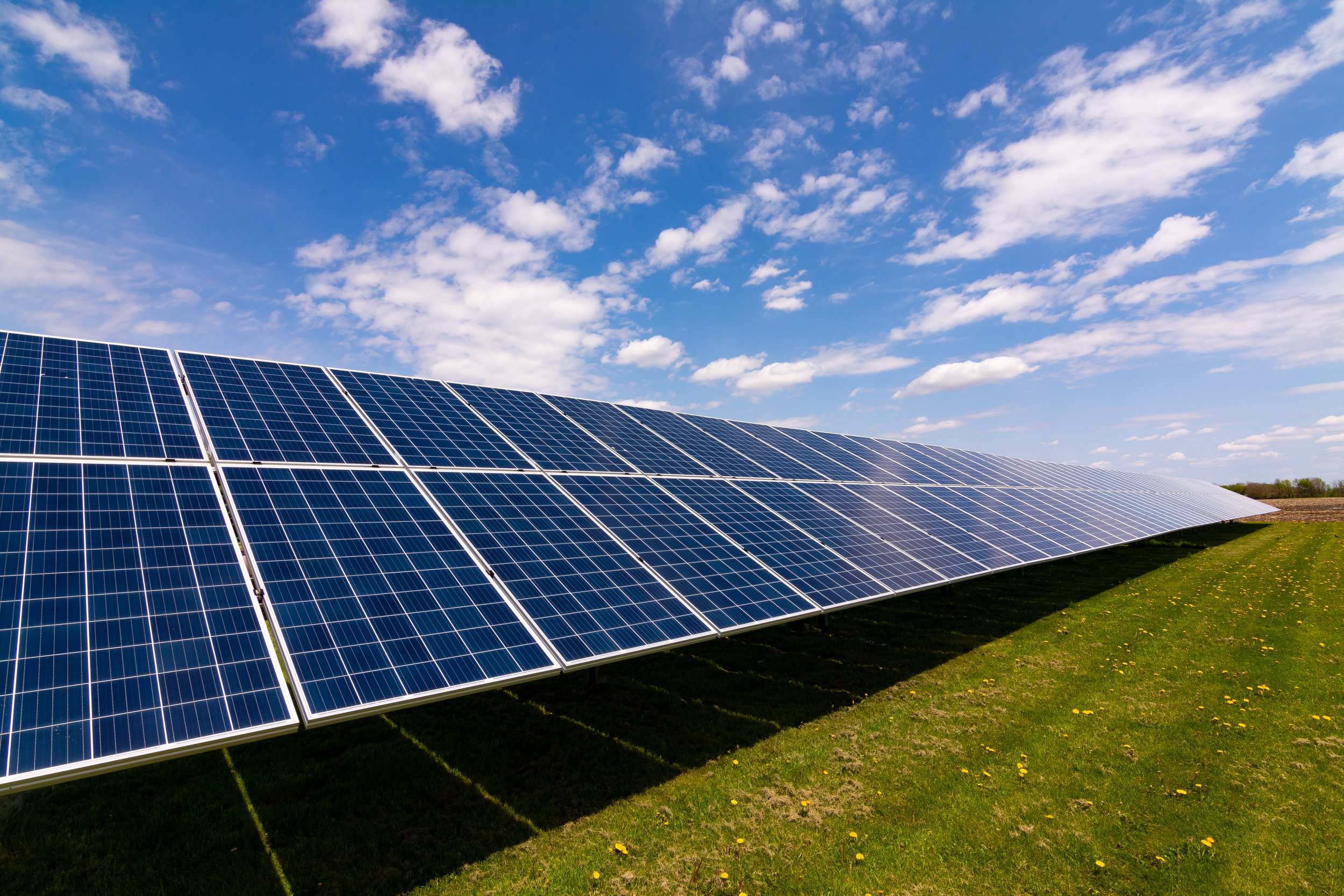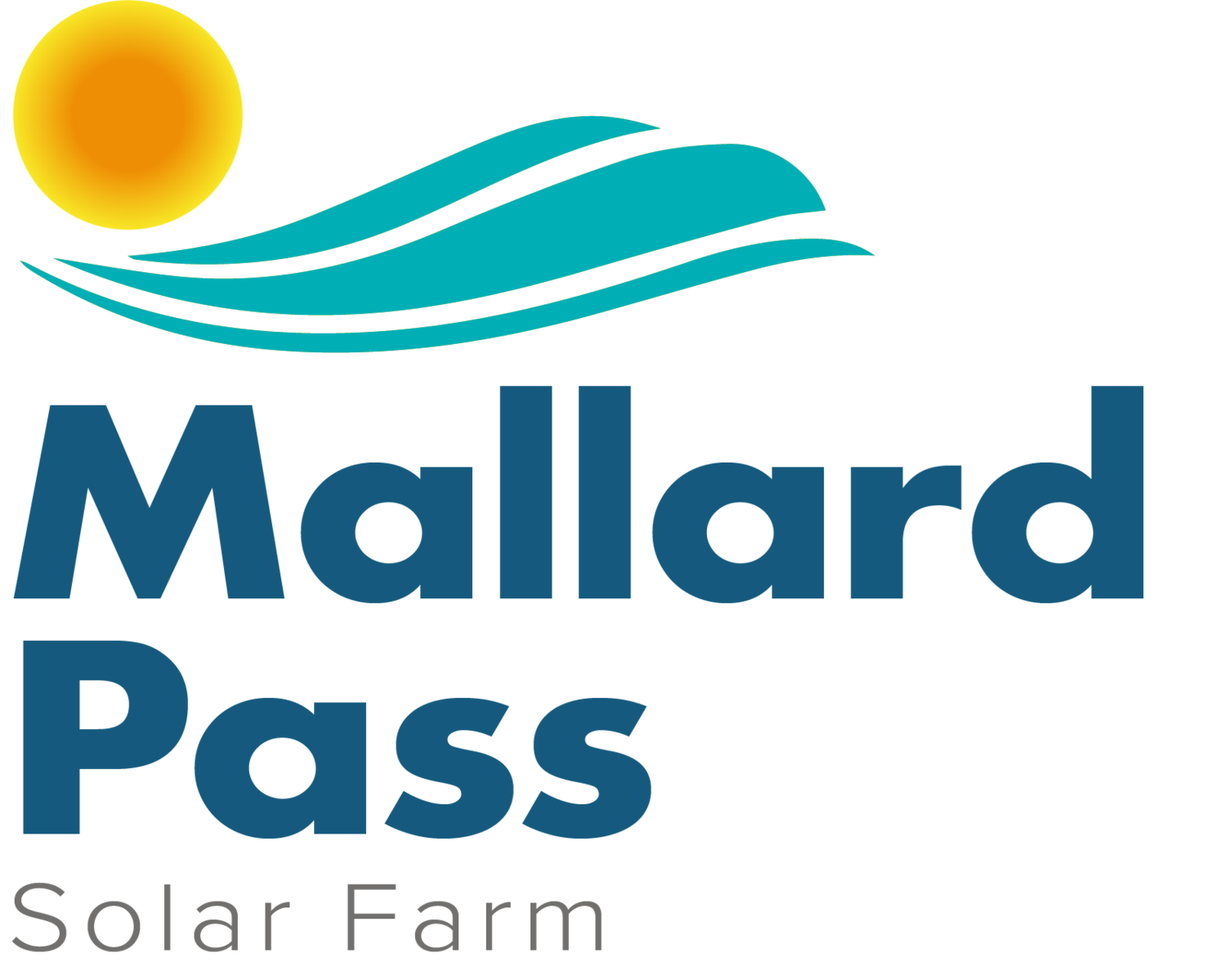
Mallard Pass Solar Farm
Mallard Pass Solar Farm is a proposal for a new solar farm with infrastructure to connect to the national grid, along with the necessary mitigation measures to address the impacts of the project, and ecological enhancements and opportunities for improved recreational access by the local community.
Mallard Pass Solar Farm is proposed to be located on agricultural land either side of the East Coast Main Line near Essendine, partly situated in South Kesteven, Lincolnshire, and partly in Rutland. The site is close to the National Grid Ryhall 400 kilovolts (kV) Substation at Uffington Lane, which is where the electricity generated from the proposed solar farm will connect to the national grid, providing clean, secure power for a variety of uses; including homes, industry and infrastructure. Mallard Pass is expected to generate in the region of 350 megawatts (MW) of renewable energy, enough to power the equivalent of 92,000 UK households. See FAQs here.
Mallard Pass will support the urgent need to decarbonise our electricity system, deliver reliable and sustainable low-cost energy, enhance the local environment and be a responsible neighbour.
Due to the capacity of the solar farm exceeding 50 megawatts (MW), Mallard Pass Solar Farm is classified as a Nationally Significant Infrastructure Project (NSIP) and requires a Development Consent Order (DCO) under the Planning Act 2008. The Mallard Pass Solar Farm DCO application was submitted to the Planning Inspectorate (PINS) on 24 November 2022, and accepted for Examination by PINS, acting on behalf of the Secretary of State for Energy Security and Net Zero (DESNZ), on 21 December 2022. Our DCO application documents are available to view on our Documents webpage linked here.
The Examination for Mallard Pass began on 16 May 2023 and came to an end on 16 November 2023. All information regarding the Examination (including documents submitted and recordings of previous hearings) is available on the PINS project website, accessible by clicking here.
The Examining Authority (ExA) made its recommendation to the Secretary of State for DESNZ on Friday 16 February 2024. This means we are now in the Decision stage of the DCO application process. For more information on the planning process, the DCO application, and how to have your say, please visit our Have Your Say webpage linked here.
Although the exact technology and type of solar arrays to be used have yet to be decided, an indicative diagram of the typical components is shown below.
Key Benefits
-

Mallard Pass Solar Farm has the potential to power in the region of 92,000 UK homes, approximately the number of households in Rutland and South Kesteven combined.
-

Mallard Pass will support green spaces that connect habitats, enhance biodiversity and link recreational routes.
-

Mallard Pass Solar Farm could take the equivalent of 35,700 cars off of roads.
-

Mallard Pass will support low-cost energy generation that increases the reliability of our national grid.
-

The project will help the UK reach urgent climate change targets whilst supporting the local environment by delivering a biodiversity net gain.
Use our interactive map to search for a location.
To view a plan showing the location and route of Mallard Pass Solar Farm as submitted in the Development Consent Order (DCO) application, please refer to the Location, Order Limits and Grid Coordinates Plans (Document Reference: EN010127/APP/2.6), available here:
https://infrastructure.planninginspectorate.gov.uk/wp-content/ipc/uploads/projects/EN010127/EN010127-000084-2.6_Location_Order%20Limits%20and%20Grid%20Coordinates%20Plans.pdf
FAQs
Please see below our latest Frequently Asked Questions (FAQs) regarding Mallard Pass Solar Farm.
-
There is a growing body of UK energy and climate change law, policy and guidance working to highlight the urgent need for new energy generation infrastructure, particularly from renewable sources such as solar. Electricity generated from solar power has carbon emissions which are near to zero over the lifetime of a project, and solar projects are also quick to construct and operate statically; meaning that they will provide decarbonisation benefits at the earliest opportunity with minimal noise or air quality impacts during operation.
The UK Government has committed to achieving net zero greenhouse gas emissions by 2050 and decarbonisation of the energy sector by 2035. Government expects that a low-cost, net zero consistent electricity system is likely to be composed predominantly of wind and solar, and that wind and solar will be key building blocks of the future generation mix. The UK needs sustained growth in the capacity of these sectors in the next decade to ensure that we are on a pathway that allows us to meet net zero emissions in all demand scenarios.
In April 2022, the Intergovernmental Panel on Climate Change published their Sixth Assessment Report on the status of global Climate Change. The report concluded that global commitments to decarbonise are not yet sufficient to meet nor sustain a successful track towards containing global temperature rise below 1.5 Celsius, and that many commitments which have been made have not yet been implemented in policy or action.
That same month, the UK Government published its April 2022 British Energy Security Strategy. The first quarter of this year demonstrated how the UK is exposed to volatile energy prices through international energy markets in coal, gas and oil. Price rises in 2022 have and will continue to filter through to consumer bills. In the Strategy, the Prime Minister wrote, “We need a power supply that’s made in Britain, for Britain”. In particular, the strategy supports a five-fold increase in the deployment of solar technology by 2035, recognising the abundant source of solar energy in the UK and the 85% reduction in solar cost over the last ten years.
At a time when gas prices are at an all-time high due to volatile international energy markets and our reliance on imported energy, it is our goal to deliver a project that provides a clean, renewable and low-cost source of electricity all the while delivering a biodiversity net gain in the local site area.
The UK already has over 13 gigawatts (GW) of solar installed and operational (National Statistics, 2022). This has been instrumental in helping the UK achieve a 70+% reduction in carbon emissions from electricity generation versus a 1990 baseline. Solar is already, and is set to continue to be, an incredibly important part of the electricity generation sector.
-
At this stage in project development, it is anticipated that Mallard Pass Solar Farm will not require public subsidy. One of the benefits of solar compared to some other forms of renewable energy generation is that, provided the site selected is commercially viable and that costs are not greater than normal, it can be viably delivered by private investment.
-
Since Stage One, Mallard Pass Solar Farm has decreased the proposed area for solar panels and infrastructure by over 100 hectares, going from 570 hectares at Stage One to 463 hectares at Stage Two. The total site area is 906 hectares, which has increased since Stage One due to the inclusion of about 23 hectares for potential highway improvement works and access routes. Around 420 hectares of the total site area is now being proposed as spaces for ecological mitigation and enhancement measures (tree belts; nature areas with picnic benches; wetland habitat areas) or to be retained as woodlands, hedgerows, and agricultural land.
Following Stage Two, the overall size of Mallard Pass was then decreased from 906 hectares to 852 hectares in the Development Consent Order (DCO) application for the project. This is because additional PV arrays were removed from the proposals (including the removal of the solar PV Site north of the Drift) so as to further protect local residential and public amenity, as well as appropriately mitigate visual impacts.
Over 28% (239 hectares) of the Mallard Pass Solar Farm land will be retained and continue to be used for agricultural production, and a further 419 hectares of grassland beneath the solar PV arrays will continue to support the agricultural industry through grazing and/or fodder production.
-
In addition to the generation of secure, low-cost, decarbonised and renewable energy, Mallard Pass would deliver a 72% biodiversity net gain for local species’ Habitats, improve green infrastructure connectivity through the creation of ecological corridors, as well as enhance and create new recreational routes.
As a result of environmental assessments and feedback received during both the non-statutory Stage One consultation (04 November – 16 December 2021) and Stage Two Statutory Consultation (26 May – 04 August 2022), the Development Consent Order (DCO) plans for Mallard Pass include:
112 hectares of new tussocky grassland with wildflowers;
43 hectares of wildflower grassland with calcareous species;
13.9 kilometres of new hedgerow planting;
3.7 hectares of wet woodland planting;
7.5 kilometres of new treebelt planting; and
8.1 kilometres of new permissive paths.
Mallard Pass Solar Farm has the potential to provide benefits at both the national and local level, helping the UK as a whole by increasing our country’s supply of reliable and low carbon energy, while at the same time offering environmental mitigation measures and local enhancements to community and biodiversity.
-
We are currently undertaking the process of refining the design and layout for the Mallard Pass Solar Farm proposals. The final output capacity of Mallard Pass will depend upon the final design selected for the development. As we work to further refine our plans, we will update our estimates of how much electricity we expect Mallard Pass Solar Farm to generate and continue to place this estimate within the context of local and national consumption.
In terms of proposed capacity, our proposals for Mallard Pass Solar Farm remain the same; the project is expected to have an installed generation capacity of approximately 350 megawatts (MW). This calculation is based on detailed technical analysis of the site area, which accounts for natural features, shadow effects and historical sunlight levels. Taking these factors into consideration, we estimate that our current proposals could generate approximately 350,000 megawatt hours (MWh) per year. This figure also accounts for hours in the year (8760) and a solar load factor, which is an efficiency indicator for electricity generation that accounts for factors such as weather conditions, and average hours of sunlight.
To help contextualise the 350 MW figure indicating the potential power output from the site, we relate it to potential homes powered. The average UK household consumes approximately 3.76 MWh per year. Therefore, Mallard Pass has the ability to generate the same amount of power each year as would be consumed by approximately 92,000 ‘average’ UK households, in a full 12-month period. For more information, please read our FAQ that breaks down the calculations in further detail below.
-
Please find a breakdown of the calculations used to determine the annual production and estimated homes powered for the Mallard Pass Solar Farm.
Annual production calculation
• The initial concept plan for Mallard Pass is expected to have an installed generation capacity of approximately 350 megawatts (MW).
• This calculation is based on detailed technical analysis of the site area, including natural features, shadow effects, and historical sunlight levels.
• Taking these factors into consideration, we estimate that our current proposals could generate approximately 350,000 megawatt hours (MWh) per year.
• This figure also accounts for the hours in the year and a solar load factor, which is an efficiency indicator for electricity generation that takes into account factors such as weather conditions, and average hours of sunlight.
• The expected annual production can be calculated as follows:
o 350,000 kW (installed capacity (350 MW * 1,000)) * 8,760 (number of hours in a year) * 0.114 (solar load factor estimated based on East Midlands history plus uplift for newer, more efficient solar panels) = 349,524,000 kWh.
Homes powered calculation
• Based on the annual electricity production figure of 349,542,000 kWh calculated above, we estimate that Mallard Pass Solar Farm has the potential to generate the same amount of power each year as would be consumed by approximately 92,000 ‘average’ UK households, in a full 12-month period.
• The estimated homes powered can be calculated as follows:
o 349,524,000 kWh (annual production (kWh)) / 3,760 kWh (average household consumption) = 92,958.51 ≈ 92,000 homes powered.
• This is roughly equivalent to the domestic consumption of electricity in Rutland and South Kesteven combined.
-
As part of the pre-application process for a Development Consent Order (DCO) Application, it is our responsibility to consult parties who hold an interest in any land that is within the draft Order limits for the project. This is a statutory requirement under section 42(d) and section 44 of the 2008 Planning Act.
This means that as part of our Stage Two Statutory Consultation, we sent letters to parties we believe have land interests affected by the Mallard Pass proposals, to consult with these stakeholders and gather feedback on our proposals.
This included parties who may have an interest in the land beneath public highway (known as “subsoil”) included in the draft Order limits. This included the subsoil beneath Stamford Road, where we are proposing to install and maintain cabling under the highway and acquire rights in the subsoil to do this. In law, those owning property either side of a highway are presumed to own the subsoil up to the middle point. To prove that this presumption is correct, the land owner needs to produce evidence to show the subsoil is in their ownership and they may be entitled to compensation. However, in practice the value of that compensation is typically low, reflecting the fact that the subsoil is of little, if any, use to the land owner.
If you think this applies to you / your property, please contact us directly via the project-dedicated communications lines listed below. Mallard Pass Solar Farm Limited is willing to discuss this issue with you, help assess your eligibility and consider any claim for compensation you may wish to make.
For more up-to-date and detailed information about Mallard Pass Solar Farm, please click here to view our Development Consent Order (DCO) application materials.


